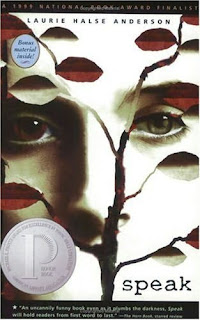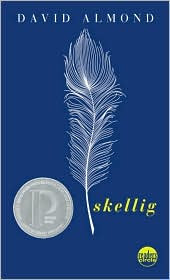
Tears of a Tiger
by Sharon M. Draper
Fiction
Antheneum Books, 1994
Summary: Andrew Jackson is a high school basketball player who has a close-knit group of life-long friends. During an after-the-game celebration which includes drinking beer and riding around with his friends, Andrew, who is driving, begins to lose control of the car and ends up hitting a wall. Andrew and his friends experience a life-altering moment. Three of the four boys make it out of the car; the fourth one, Robbie, is pinned inside. While the boys are trying to pull Robbie out of the car, it explodes, and the boys listen as Robbie screams for help as he burns to death. This experience is one that affects all of the boys; however, Andy never gets over the guilt he has about causing his friend’s death.
Andy’s attempt at recovery has many ups and downs. Andy’s grades suffer, his relationships with his friends change, and even when he looks as if he’s getting his life together as he begins to participate in school and he returns to basketball, he constantly has relapses into deep depression wondering why he’s alive. Counseling appears to help Andy move from wanting to die to learning to cope. However, even though he is labeled as stable and he stops seeing his counselor, he never completely gets rid of the guilt and the pain that lies deep within him.
As he begins to spiral out of control, he makes a few attempts to reach out to his parents who never really listen to him. He also tries to reach out to his girlfriend who has a hard time dealing with his numerous breakdowns and mood swings. During his the last day of his life, he attempts to reach out to his counselor who is not available when he calls, his coach who isn’t home when he calls, and to his girlfriend whose mother refuses to wake her up to talk to him so late at night. After failing at connecting with anyone, he feels utterly alone and sees taking his own life as the only way to stop the pain he is feeling.
The reader experiences how Robbie’s death affects the student body, the teachers, the coach, the community, but most importantly, Andy. The story is told from the perspective of all those people, and the reader sees how they react, how they perceive what is going on around them, and how they perceive Andy is coping with Robbie’s death. The reader also experiences how Andy’s suicide causes anger among those he leaves behind including his friends and his younger brother. His brother Monty is left with questions and a broken home because his parents can’t handle the death of their son. The novel ends with Monty remembering being told by Andy that his drawing of a tiger could have tears on it if he wanted it to—according to Monty, the tiger represented Andy because Andy was always sad--if only the adults were as perceptive as Andy’s little brother.
Themes: Death; Friendship; Family Relationships, father and son, mother and son, brother and brother; Thoughts and feelings of African-Americans towards Caucasians; Stereotypes; Female/male interactions; Suicide; Seeing value in literature; Courage; Learning how to cope; Signs of someone who needs help; Grief
Rationale for Use:
1. Written in a variety of formats such as newspaper articles, regular narrative style, and letters
2. Contains believable adolescent characters
3. Multicultural
4. Relevant subjects for high school students
5. Offers a variety of points of view
Content Area Connections:English: A variety of written forms are modeled in this novel. For example, the concise style of a newspaper article is used. Also, the personal style of a friendly letter or a journal entry can be modeled with this novel. The novel also enables the discussion of many common themes found in literature with the use of one book in an easy to read, non-threatening, original style.
Possible Problems or Concerns:A friend’s death can be a difficult subject to discuss in a classroom, especially at the high school level where the students do experience the death of fellow classmates. A more sensitive topic though would definitely be the suicide in the novel. It would have to be addressed in discussion so the students can process it and analyze how the characters feel themselves about Andy’s suicide.
~Frances Elder
 The Awakening
The Awakening


















